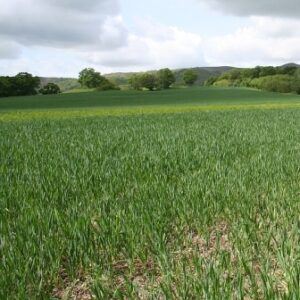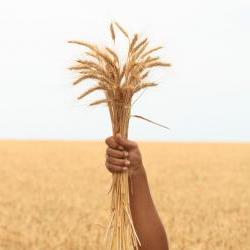In Gregorian year 2024 and Hebrew year 5784, another division developed among the Messianic and Hebrew Roots community. A significant minority of folks began the Biblical year and Feast cycle a month earlier than the rest. The reason is the discovery of “aviv” wild barley in the Holy Land prior to the new moon in March.
When is the first month of the Biblical year? This isn’t the first time this question has come up, and it isn’t the first time there has been disagreement over when it was time for Passover and the other Appointed Times. But this is, at least in my memory, one of the largest splits over this issue among our community.
What does Scripture say about the beginning of the Biblical year? What part does barley and other grains play?
The First Month – Aviv (Abib)
Now the LORD said to Moses and Aaron in the land of Egypt, “This month shall be the beginning of months for you; it is to be the first month of the year to you.”
(Exodus 12:1-2 NASB)
Immediately preceding the tenth and final plague against Pharaoh and the Egyptians, we find this passage where Yahweh himself declares the beginning of the year – “this month.” It is the month when the Passover is to be celebrated, remembering the time of the deliverance from Egyptian slavery. But we are left here without any specific instructions for identifying “this month.”
Other passages may shed a little more light on “this month.” Please take the time to also read them in context.
On this day in the month of Abib, you are about to go forth.
(Exodus 13:4 NASB)
You shall observe the Feast of Unleavened Bread; for seven days you are to eat unleavened bread, as I commanded you, at the appointed time in the month Abib, for in it you came out of Egypt.
(Exodus 23:15 NASB)
You shall observe the Feast of Unleavened Bread. For seven days you are to eat unleavened bread, as I commanded you, at the appointed time in the month of Abib, for in the month of Abib you came out of Egypt.
(Exodus 34:18 NASB)
Observe the month of Abib and celebrate the Passover to the LORD your God, for in the month of Abib the LORD your God brought you out of Egypt by night.
(Deuteronomy 16:1 NASB)
These six times (twice in Exodus 34:18 and Deuteronomy 16:1) we see the phrase “the month of Abib” (or Aviv). The phrase in Hebrew has the definite article “ha” in front of the word abib, and since this phrase chodesh ha‘abib is a noun construct the prepositional phrase is rendered “the month of Abib” (or ba’chodesh ha’abib “in the month of Abib”).
According to the Theological Wordbook of the Old Testament, abib means “Barley. This noun refers to barley that is already ripe, but still soft, the grains of which are eaten either rubbed or roasted“ (TWOT #1). So, literally, this first month is the month of barley in this stage of growth or ripeness. The Hebrew word never appears in the Tanakh (the Hebrew Bible) outside of the Torah.
According to those who determined the first month of the Biblical Year began in March, 2024, one of the reasons for doing so is the discovery of barley in this stage of growth in specific places in Israel.
Barley and Other Grains
(Now the flax and the barley were ruined, for the barley was in the ear and the flax was in bud. But the wheat and the spelt were not ruined, for they ripen late.)
(Exodus 9:31-32 NASB)
This phrase, a parenthetical phrase in the NASB and several other translations (although no punctuation is found in the Hebrew text), is describing the agricultural state of these grains at the time of the plague of hail before the exodus from Egypt. It indicates that two crops, flax and barley, were far enough along that the plague of hail destroyed them. However, the wheat and spelt (or possibly another grain) were not mature enough to suffer loss.
Some of the March new Biblical year proponents point to these as well in determining the beginning of the first month. Flax and barley must be in a more advanced stage of maturity, with wheat and this other grain not yet up.
Remember that the plague of hail described in Exodus 9 was the seventh plague in a series of nine leading up to the final plague, the death of the firstborn, on the night following the Passover. This was followed by the plague of locusts (the eighth) and the plague of three days of darkness (the ninth). If we assume the state of the barley and other grains are determining factors in starting the first month of that year, then plagues seven, eight, and nine must have occurred in quick succession within just a couple of weeks’ time at most. Scripture, however, doesn’t even tell us they happened in the same year.
The Wave Sheaf Offering
Speak to the sons of Israel and say to them, “When you enter the land which I am going to give to you and reap its harvest, then you shall bring in the sheaf of the first fruits of your harvest to the priest. He shall wave the sheaf before the LORD for you to be accepted; on the day after the sabbath the priest shall wave it.”
(Leviticus 23:10-11 NASB)
They also postulate that a full sheaf of the barley must be ready to harvest for the wave sheaf offering, often called “First Fruits.” This is said to take place on the morning after the Sabbath that occurs during the Feast of Unleavened Bread (Leviticus 23:11).
It is important to note that much of this is tradition. This offering is only described in this part of Leviticus 23 and not in any other place in the Hebrew Bible or New Testament. So this is all we have. It does not specify precisely which Sabbath is intended. Traditional Judaism assumes it to be the first High Sabbath of the Feast of Unleavened Bread. Others assume it to be the weekly Sabbath during the Feast, possibly influenced by the later first-day resurrection of Yeshua. The Qumran Community as described in the Dead Sea Scrolls said it was the Sabbath after the Feast had ended.
The reality, which can be hard to accept, is that this portion of Leviticus 23 is set apart from the Feast of Unleavened Bread buy the phrase “Speak to the sons of Israel…” indicating it is an entirely new section. The only thing we know for certain is that it required harvesting the first sheaf of an unspecified type of grain, probably barley. It may not be directly related to any calendar date at all, but only to the condition of the harvest that would be dependent on a number of things, including weather.
Biblical Signs
Then God said, “Let there be lights in the expanse of the heavens to separate the day from the night, and let them be for signs and for seasons and for days and years; and let them be for lights in the expanse of the heavens to give light on the earth”; and it was so.
(Genesis 1:14-15 NASB)
The only Biblical signs for determining calendar issues are celestial. There is no mention of any agricultural or other sign that the year has begun. However, it must also be acknowledged that the exact way to use these celestial signs to determine seasons, days, and years is left undefined.
In the early chapters of Exodus we can read that when the hail came, certain grains were in certain stages of development. That was true for that particular year, which may or may not have been the year of the exodus from Egypt. No requirement is stated that this must be the case every year. No specific timing is given as to exactly when the waving offering of the sheaf of grain, assumed to be barley but not specified, was to be performed. The only indication is that it was the first sheaf, whenever that was harvested.
In the Hebrew Bible, there is nothing that specifically states how to use the celestial signs. Details can be gleaned from other writings, including those found in the Dead Sea Scrolls. And the New Testament never addresses any calendar date at all. Those using barley to trigger the beginning of the Biblical year should realize they are using Jewish tradition, and even that tradition is no longer used by the Jewish community.
As we pursue this walk, let us strive for unity in fellowship as we celebrate the Feasts. It could well be that none of us have the date correct.
Update: Please read my post, Greek and Hebrew Thought: The Calendar.




I’m glad you are awake and letting your light (enlightenment) shine